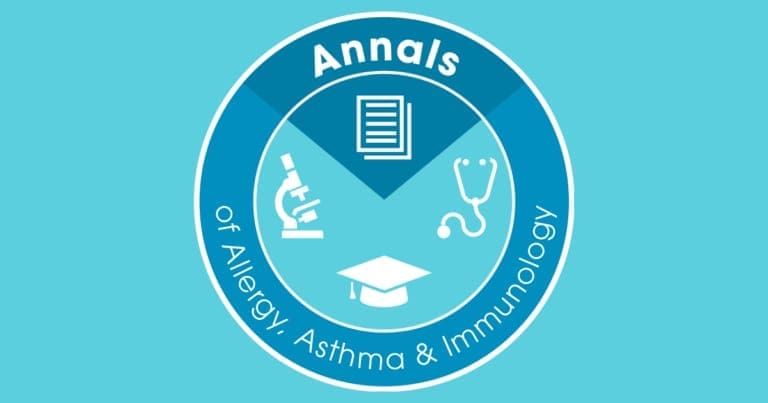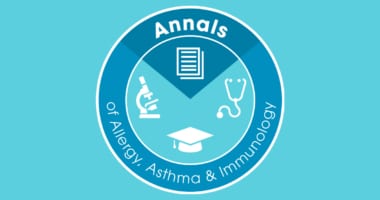Where has the month gone? Hopefully by now things have bottomed out temperature-wise (and snow-wise) for those of you who have to go through that sort of thing. We do not get much snow down south in Mississippi, but our pollen season starts early as well. Anyway, all of us are gearing up for spring allergy season. Our patients with aspirin-exacerbated respiratory disease (AERD) need care year-round, but right now seems to be a particularly rough time for many of them. The February issue of Annals is particularly focused on AERD, its complications and treatments. The editorial team solicited and accepted reviews and perspectives that address multiple different aspects of the illness. Many thanks to associate editor Larry Borish, MD, FACAAI, for shepherding these articles through review.
An excellent review for your reading pleasure was authored by Kellen J. Cavagnero, BS, and Taylor A. Doherty, MD, from La Jolla, CA, who discuss the role of eicosanoids in recruitment and activation of innate lymphoid cells type 2 in AERD and trafficking. Although the precise mechanisms of AERD pathogenesis are not well understood, greater levels of pro-inflammatory lipid mediators and type two cytokines are found in tissues derived from AERD patients relative to controls. Following pathognomonic COX-1 inhibitor-induced reactions, pro-inflammatory mediator concentrations (prostaglandin D2 and cysteinyl leukotrienes) are rapidly increased, as are ILC2 levels in the nasal mucosa. ILC2s, which potently generate type 2 cytokines in response to lipid mediator stimulation, may play a key role in AERD pathogenesis. Future investigations leveraging novel next-generation single cell sequencing approaches along with recently developed AERD murine models will better define lipid mediator-induced ILC2 trafficking in patients with AERD for the purpose of developing more effective therapies.
We also have two very interesting perspectives for you. The first, authored by Hannah C. Martin, MD, Tahereh Derakhshan, PhD, and Daniel F. Dwyer, PhD, from Boston, provide insight into the potential role of mast cells as an initiator of ILC2 inflammatory responses in AERD. They provide evidence from the literature and their own work that suggests an underlying mast cell hyperplasia as part of the pathophysiology of AERD. This perspective adds to the literature by linking the clinical, mast cell (MC) activation-associated phenotype of AERD with a discussion of basic MC biology, introducing the concept that the increased levels of MC activation products observed in AERD patients reflect, at least in part, an increased MC burden within polyp tissue rather than exclusively reflecting differences in MC activation. The other perspective is by Tanya M. Laidlaw, MD, from Boston, who writes about the evidence surrounding the choice of aspirin desensitization vs. use of biologics in AERD patients. Dr Laidlaw provides a thoughtful, evidence-based approach to the questions with discussion for the use of both modalities, sometimes in the same patient, based upon specific clinical criteria. For those who care for AERD patients, this is a must read.
I hope your spring allergy season is successful and we return to some sense of normalcy for our patients and our practice settings. I look forward to the time when we can all see one another face-to-face at meetings. Until then, stay safe and healthy.
Gailen D. Marshall Jr., MD PhD, FACAAI
Editor-in-chief


